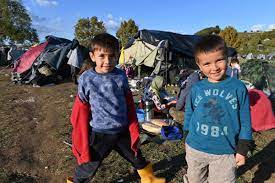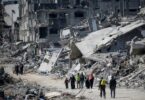Jon Van Housen & Mariella Radaelli
As European leaders gathered for a summit in Brussels late last week, it was clear that sentiment has increasingly hardened against welcoming new migrants. Some 330,000 illegal border crossings were detected last year by Frontex, the European Border and Coast Guard Agency, the highest level since 2016. That’s up 64 per cent from 2021.
But conflict in Ukraine and a devastating earthquake spanning the Turkey-Syria border will no doubt drive further waves of aspiring refugees. Can Europe – which is itself struggling with a range of severe challenges – continue to offer assistance to them? The answer is a resounding ‘no’ from Italy’s Prime Minister Giorgia Meloni. Her recently installed far-right government made illegal migration, especially over the waters of the Mediterranean Sea, a signature issue in its rise to power.
And Italy is far from alone. Austria’s Chancellor Karl Nehammer has called on the bloc for a unified response – perhaps building a wall to keep migrants out – while even Germany agrees that stricter enforcement is needed. Nehammer said his counterpart Giorgia Meloni and he have much in common here, albeit with different preconditions. What the two of them have in common, he explained, is that they want to take joint and united action against illegal migration and it is high time for a European solution.
German Chancellor Olaf Scholz says it is important that EU members work together on migration, whether [it is] “about controls at the external borders, improving infrastructure, or cooperation with countries of origin and transit”. Following the one-day summit that stretched into the early morning hours, European Commission President Ursula von der Leyen said EU leaders have agreed tougher measures to tackle “irregular migration”. “We will act to strengthen our external borders,” von der Leyen said.
EU leaders are striking a hardline tone, threatening to use visa permits, trade flows and development aid as leverage to slow illegal border crossings while speeding up the return of those denied permission to stay. Italy recently adopted a mandatory code of conduct for rescue ships and is pushing to have similar rules at the EU level, but the issue remains divisive. Meloni told reporters that “we asked and obtained that the European Council’s conclusions be focused on the external dimension and therefore on the protection of the EU’s external borders, taking into account the difference that exists between (national) borders, and particularly the specificity of maritime borders”. All of this can be found in the conclusions, she added.
But as the death toll from the Turkey-Syria earthquake continues to mount, border control officials are no doubt preparing for yet another surge in displaced people. Syria was already the source of a large number of those seeking asylum in Europe. Destroyed homes and an economy in tatters even before the quake leave many with no choice but to attempt an arduous overland trek in search of a better life. As many as 5.3 million people in Syria may have been affected by the earthquake, according to the UNCR, the main UN agency for refugees, which just released an update describing how its own staff is battling brutal conditions on the ground as it attempts to deliver emergency aid.
“For Syria, this is a crisis within a crisis. We’ve had economic shocks, Covid and are now in the depths of winter with blizzards raging in the affected areas,” Sivanka Dhanapala, UNHCR Representative in Syria, said in a video link to Geneva, Switzerland, from the ravaged country. “Roads have been damaged and that hampers us trying to reach people. It’s been very, very difficult. There are 6.8 million people already internally displaced in the country. And this was before the earthquake.” Yet as heart-rending as the situation is, a large number of Europeans are wondering how many more refugees can be absorbed – if indeed they were truly integrated before. In his own on-the-ground report, Marco Scherf, district administrator for Miltenberg in the German state of Bavaria, said in the past year about 500 refugees from Syria, Afghanistan and North Africa came to the largely rural district along with around 1,500 from Ukraine.
“There’s no more housing, not enough teachers, not enough doctors, no daycare spots free,” the Green Party politician told the German press. “We have reached the limits of our capacity. We now don’t even have enough resources here to take care of our own local residents.” For years, EU member states have been debating solutions that range from sending people back to tackling root causes, which means better support for economies of origin countries. The bloc might be edging toward more of a consensus on how to deal with what can only be termed a crisis, but for now it appears humanitarian exhaustion has set in. Estonian Prime Minister Kaja Kallas told reporters in Brussels there should be a “clear message that it’s not so easy to come to Europe and stay here. You can only come if you have the right to come”. Yet for those affected, it is more about the right or instinct to survive. With the situation so dire, it’s time for the entire global community to further step up efforts. Europe alone has likely reached the saturation point.







